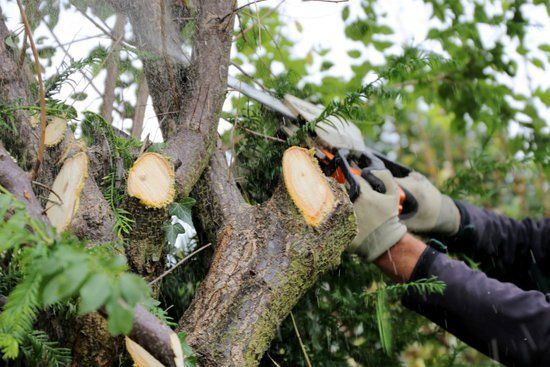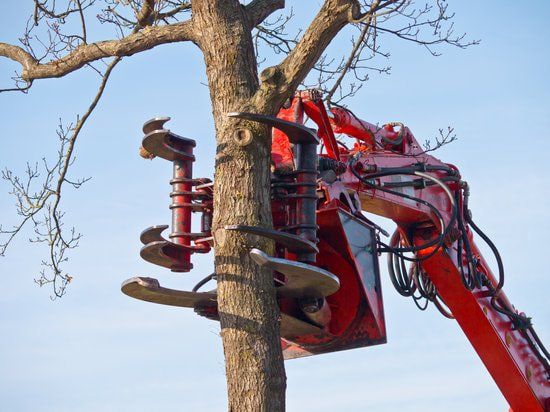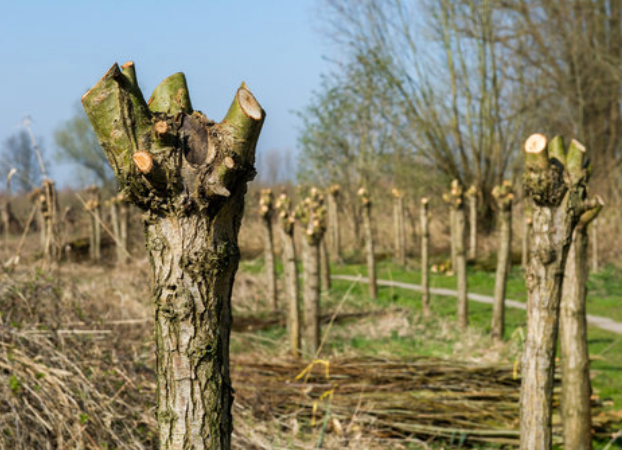Glasgow - Trees
POLLARDING
Pollarding Glasgow - Cost-Effective Tree Pollarding Solutions
Pollarding is a tree management technique dating back centuries, primarily used to encourage a dense head of foliage and branches. This practice involves removing the upper branches of a tree, promoting a dense growth of new branches and leaves. It ensures the tree stays at a manageable height and fosters a long, healthy life for the tree.
The benefits of pollarding are manifold. For one, it helps maintain the health of trees by removing diseased or damaged branches. Secondly, it assists in managing the size of trees, particularly in urban environments where space is limited. Also, pollarding can enhance the aesthetic appeal of the tree, contributing to the overall attractiveness of the landscape. Moreover, the practice can maintain the tree's structural integrity, reducing the risk of branch failure. Our skilled team at Glasgow Trees are experienced pollarders, ensuring the best care for your trees.
Tree Pollarding
Our tree pollarding service in Glasgow is a comprehensive solution for managing the growth of trees and shrubs. Our team will prune back overgrown branches to an even height, creating a neat and attractive aesthetic while also promoting healthy new growth. We use only the highest quality tools and techniques to ensure that our work meets safety standards while also maximising the health of your foliage. Throughout the process, we’ll monitor your plants carefully to detect any signs of stress or damage.
Tree pollarding offers many benefits, including improved air circulation and better light penetration which can help promote healthier foliage structure and reduce disease risk. In addition, this service helps to improve visibility around your property, making it easier to spot potential hazards before they become a problem.
Our Tree Pollarding Process
Initial Tree Health Assessment
Before we start the pollarding process, it is crucial to conduct an initial tree health assessment. This involves evaluating the overall health and condition of the tree, examining it for any signs of disease, damage, or pest infestation. Factors such as the tree's age, species, and location are also taken into account. Our team of professionals uses their expertise to gauge the tree's suitability for pollarding. This step ensures that the process will benefit the tree and not cause undue stress or harm. Remember, not all tree species respond well to pollarding. Therefore, a health assessment is a critical first step in our pollarding process.
Determination of Appropriate Pollarding Height
Determining the appropriate height for pollarding is a critical aspect. The height at which a tree is initially pollarded will significantly influence its future growth and overall health. Our team considers several factors when determining this height, including the tree's age, species, and overall health, along with the client's specific aesthetic requirements and safety considerations. Generally, the pollarding height ranges from 2 to 3 meters, but this can vary depending on the tree and the circumstances. By carefully selecting the appropriate height, we aim to maximize the tree's health benefits while minimising potential risks and maintaining the aesthetic value of your landscape.
Execution of the Pollarding Process
Once the initial assessment is completed and the appropriate pollarding height is established, our team begins the pollarding process. We start by removing the upper branches of the tree, carefully making cuts close to the trunk to promote new growth. Each cut is made at a slant to prevent water from pooling on the cut surface, thereby lowering the risk of rot and disease. Often, stubs are left to allow for the re-growth of branches.
During this process, our team ensures that the tree's health and safety are paramount. We use industry-standard tools and equipment, and all our operations are carried out following the best safety practices. We aim to minimize the impact on the tree and the surrounding environment.
After completing the pollarding process, the tree may seem bare, but given time and proper care, it will rejuvenate with a flurry of new growth. This practice should be repeated every few years to ensure the tree's manageable height and continuous health. Through our expertise and dedication, we strive to achieve the best results for your trees and landscapes.
Post-Pollarding Care
After the pollarding process, effective post-care is essential to foster the healthy regrowth of the tree.

Watering
Regular watering is crucial, especially during dry spells. The tree will need more water than usual as it recovers and starts to produce new shoots. However, care should be taken not to over-water, as this can lead to root rot. The soil around the tree should be kept moist but not waterlogged.

Fertilising
To support the tree's recovery and growth, a balanced fertiliser can be applied in early spring. The fertiliser should be well-composted organic material that provides a range of nutrients to foster robust new growth. Avoid fertilisers high in nitrogen, as this can lead to excessive leafy growth at the expense of overall tree health.

Pruning
After the initial pollarding, the tree will typically produce a flush of new shoots. Pruning these shoots will help maintain the shape of the tree and prevent it from growing too large. Pruning should be done in late winter or early spring, before the tree starts its main growing season. All pruning cuts should be clean to minimise the risk of disease.
Remember that trees are living organisms, and the timing and intensity of these care practices may need to be adjusted based on the tree's response. Our team at Glasgow Trees is available to provide guidance and support throughout the post-pollarding care process.
What Types of Trees Are Suitable for Pollarding
- London Plane (Platanus × acerifolia): This species is a common sight in cities due to its high tolerance for pollution and ability to respond well to pollarding.
- Willow (Salix): There are many varieties of willow that can be pollarded, benefiting from the practice to stimulate their growth.
- Poplar (Populus): Poplars are another type of tree that respond well to pollarding, often encouraging a healthy regrowth.
- Ash (Fraxinus): Ash trees can be successfully pollarded to control their size and enhance their shape.
- Lime (Tilia): Lime trees respond particularly well to pollarding, leading to a dense head of foliage.
- Mulberry (Morus): Pollarding can help control the size of this large-growing fruit tree and stimulate fruit production.
- Horse Chestnut (Aesculus hippocastanum): Regular pollarding can help maintain the health and appearance of this popular shade tree.
Whatever your reasons for pollarding it can be a great system to prolong a trees life and spark new fresh growth.
Why Choose Our Services
Our team at Glasgow Trees comprises certified arborists with extensive knowledge and experience in tree care and management. Every member of our team is committed to providing the highest level of service, leveraging their deep understanding of tree physiology, advanced arboricultural techniques, and the specific needs of different tree species. With decades of collective experience in the field, we have honed our skills in a wide range of services, including pollarding. Our track record testifies to our ability to properly assess, execute, and follow up on the pollarding process, ensuring the long-term health and beauty of your trees. Trusting us with your pollarding needs means investing in the health of your trees and the aesthetics of your landscapes, with professionals who care as deeply for your trees as you do.
Contact Us Today on
Our Commitment to Customer Satisfaction
At Glasgow Trees, customer satisfaction is at the heart of everything we do. We believe in not only providing top-notch arboricultural services but also in building strong, lasting relationships with our clients. Our team is dedicated to understanding your unique needs and expectations, and we tailor our services accordingly to ensure those needs are met. We pride ourselves on our clear and prompt communication, transparency in our operations, and our unwavering commitment to quality. Your satisfaction is our success, and we strive to achieve it at every step of our engagement. We are readily available to answer any queries, address any concerns, and provide advice on maintaining the health and beauty of your trees even after our job is done. We're not just your tree care professionals; we're your partners in maintaining a thriving, beautiful landscape.
For Free Quotation and Expert Advice
Frequently Asked Questions About Pollarding
What Is Tree Pollarding?
By removing any dead, diseased or overgrown branches, the pollarding process helps to reduce the amount of work that needs to be done to maintain your trees in the future. This includes eliminating the need for pruning and reducing the risk of pest infestations. The removal of lower branches can also help prevent injury from falling branches during storms.
In addition to offering a complete tree pollarding service, we can provide advice and assistance on how best to care for your trees after they have been serviced. Through careful selection of plants and regular maintenance regimes, you can ensure your trees will continue to thrive for years to come.
Pollarding Cost - How much does it cost to pollard a tree UK?
The cost of pollarding a tree can vary greatly based on a number of factors. These include the size of the tree, its species, its health condition, and the complexity of the work involved. Furthermore, geographical location and local market rates can also impact the cost. On average, you might expect to pay anywhere from £350 to £1,000 per tree. However, it's important to remember that each tree and each situation is unique. Glasgow Trees can provide a free, no-obligation quotation after a site visit and a thorough assessment of your tree's conditions and requirements. Our pricing is transparent and competitive, reflecting the high level of service and care we provide. Ultimately, the cost of pollarding is a valuable investment into the long-term health and beauty of your trees and landscape.
Why pollarding?
Pollarding or to pollard is an ancient method of tree surgery to control a size of a tree, and even dates back to Roman times. This process can be desired for many reasons including, encourage new growth, keep trees a required size, to harvest the branches for animal fodder or be used for various crafts like basket weaving or create fencing.
Certain trees are cut back this way to stop them shading other vegetation or keep them downsized because they could become a hazard to local electricity or telecom cabling .
It is wise to be choosy about which trees you decide to cut back using this method, we will always advise if we feel that the tree you have selected is not suited to this type of surgery.
What are the disadvantages of pollarding?
While pollarding has numerous benefits, it's important to be aware of potential drawbacks. Firstly, not all tree species respond well to pollarding. Some trees may struggle to recover, leading to potential health issues. Secondly, the initial pollarding process can dramatically alter the tree's appearance, which might not be aesthetically pleasing to some. Moreover, if not done properly, pollarding can expose the tree to diseases and pests. Finally, pollarding is a long-term commitment as it needs to be regularly maintained, usually every few years, which can add to overall tree care costs. Hence, it's important to consider these factors and consult a professional arborist before deciding to pollard a tree.
What is the difference between topping and pollarding?
While both topping and pollarding involve removing a significant portion of a tree's branches, their execution and outcomes are quite different. Topping indiscriminately removes large branches, leaving stubs and lateral branches. This technique is generally discouraged because it can lead to poor tree health, decay, and unattractive regrowth. On the other hand, pollarding is a more controlled, selective process where branches are cut back to a consistent, predetermined height. This promotes a dense head of foliage and branches. Pollarding, when done correctly, is less likely to harm the tree, and can contribute to longevity and aesthetic appeal. However, it is essential to note that not all tree species are suitable for pollarding, and professional arborist advice should always be sought before undertaking this procedure.
Does pollarding stop root growth?
Pollarding does not directly stop root growth. The technique primarily involves trimming the branches and crown of a tree, not the roots. Furthermore, the growth of a tree's roots is inherently linked to its overall health and growth, not strictly to whether it is pollarded. However, by limiting the size of the tree's crown, pollarding may indirectly influence the development of the root system. When a tree's crown is reduced, less energy is generated through photosynthesis, which could potentially slow root growth. However, this effect is typically minimal and temporary, as the tree will usually return to its normal growth patterns after recovery. Always consult a professional arborist to understand the specific impacts of pollarding on your tree species.
Contact us today if you’d like more information about our tree pollarding services in Glasgow!
Glasgow Trees, keeping things local.
Still have questions?
If you have more questions or need further assistance, feel free to reach out to us. We're here to help!

CONTACT
Glasgow Trees Clyde Offices 2nd Floor
48 West George Street
Glasgow G2 1BP, Scotland, UK.
Email: glasgowtrees@gmail.com
Tel:
0141-483-7485
QUICK LINKS
QUICK LINKS
Copyright © 2024 Glasgow Trees



